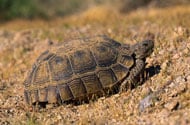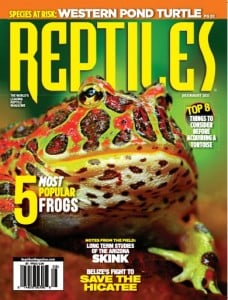Desert Tortoise
Mojave and Sonoran Deserts of Southern California, southern Nevada and Arizona in the United States with some isolated populations in Mexico.
The desert tortoise seems to do best if it can be provided with suitable outdoor accommodations with similar conditions which are found in its native range although they do seem to be quit adaptable. They do not tolerate cold and damp conditions very well. If given free range of a well planted yard or enclosure they require minimal care. Desert tortoises main staple are weeds and broad leafy weeds. They will also feed on various grasses in addition to insects and, on occasion, carrion. The diet can also be supplemented with a variety of grocery greens and vegetables if attention is given to dark leafy greens. It is also important to mix the variety as much as you possible can. Water should be available at all times even though this is a desert animal.
The desert tortoise is protected throughout its range. Due to building, rehabilitation, rescues and backyard breeding individuals do become available quite frequently throughout its native range through various agencies. They are usually not allowed to be moved across state lines due to their protected status. They are also not allowed to be sold or traded.
In years past it was relatively common practice to pick up a desert tortoise when they were encountered in their native range because of their docile nature, but this practice seems to have slowed down considerably through education and communication. Even though this practice has stopped for the most part it is suspected that there are more desert tortoises in captivity than there are in the wild.

